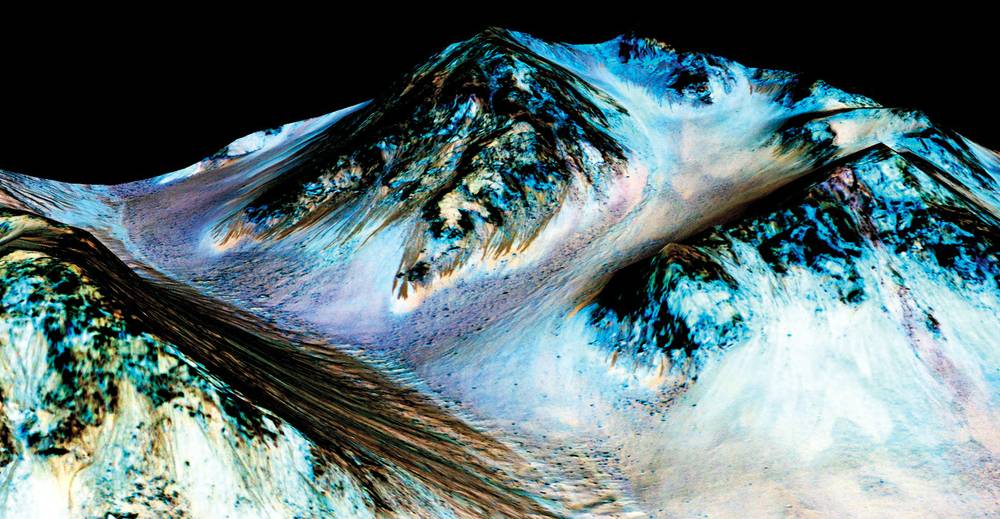No liquid water, no life. It’s that simple, which is why scientists shared a collective freak-out last week when NASA revealed evidence that water flows on Mars.
Though the presence of water doesn’t guarantee life, it’s a necessary condition, and brings us closer to discovering microorganisms if they exist on Mars.
“It’s pretty exciting,” says Henry Sun, an associate research professor of microbiology at the Desert Research Institute. “We have been studying Mars since the ’60s. We always thought that Mars had flowing water in [its] past, but not today. This is the first evidence that there’s liquid water on the surface. It changes the question about the biology of Mars, from looking for fossils to perhaps living organisms.”
Nevada is no stranger to NASA research, and DRI scientists like Sun and Duane Moser have spent years studying life in extreme environments. “You don’t want to use an Iowa cornfield as the analog for Mars, but the desert really works,” Moser says. Both biologists specialize in life underground, where life on Mars would be most likely to exist.
Sun studies microorganisms living in rocks in the dry valleys of Antarctica. Though it’s too cold for plants or animals, life thrives within the rocks during the summer—a possibility that could apply to Mars. At DRI, Sun also works on broader Mars life detection, life in South America’s Atacama Desert and microbial communities in Death Valley.
Moser works on NASA Astrobiology Institute’s Life Underground project, searching for microbial life in the Earth’s subsurface, and he’s submitted a proposal to NASA to search for microbes in Mars’ underground lava tubes using a test rover. His team will participate in the 2020 Mars rover mission.
Ice was detected on the red planet in 2008, but it was only recently that an orbiter’s super-camera snapped what appear to be streams, and a spectrometer measured reflected light to confirm harsh salts in the water. Salt is thought to be what keeps water from freezing on Mars, which has an average temperature of -81 degrees Fahrenheit.
“We have to find out if life as we know it can tolerate the extreme chemistry of this brine,” Moser says. “Life as we don’t know it might like it.”







